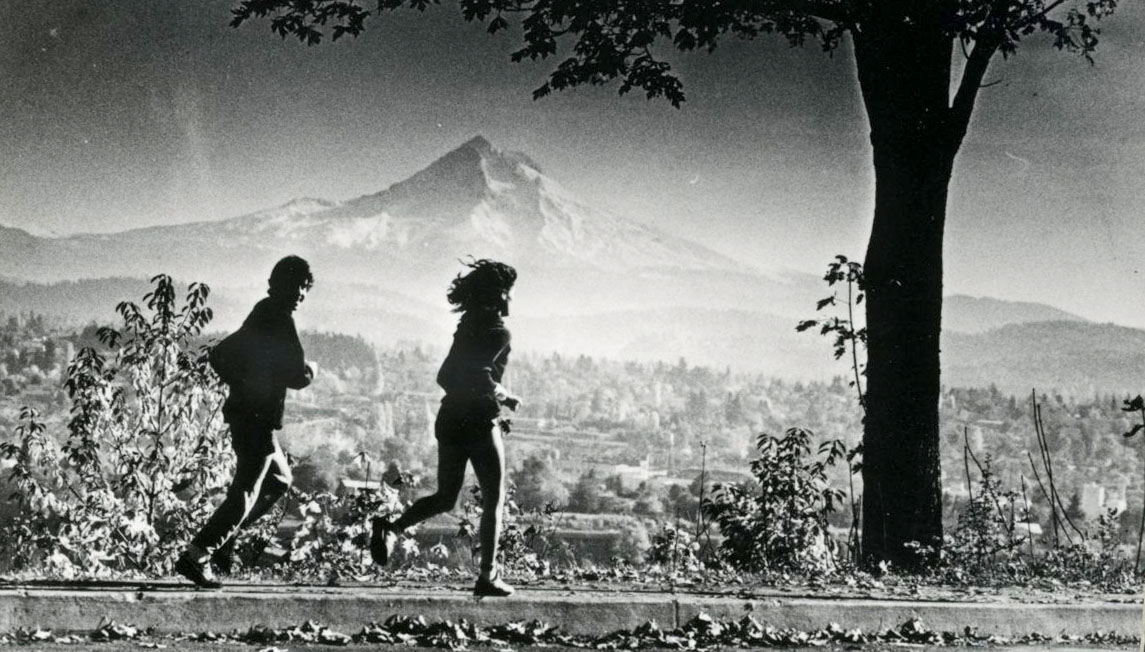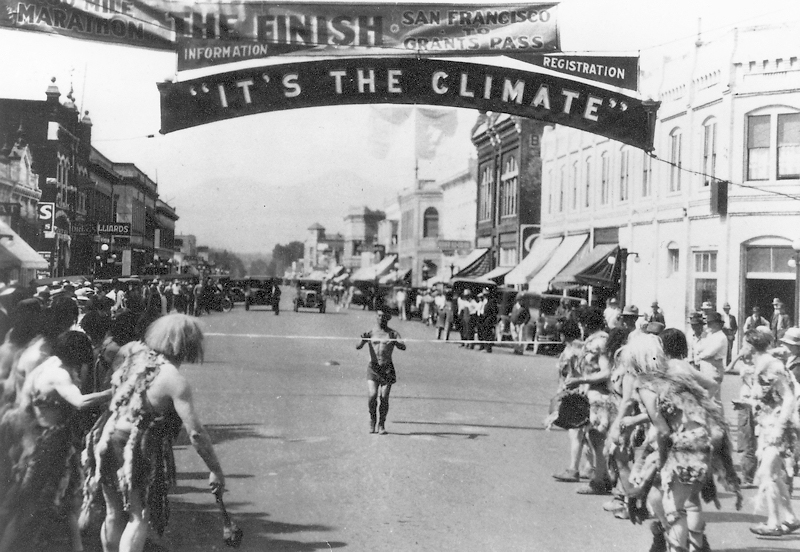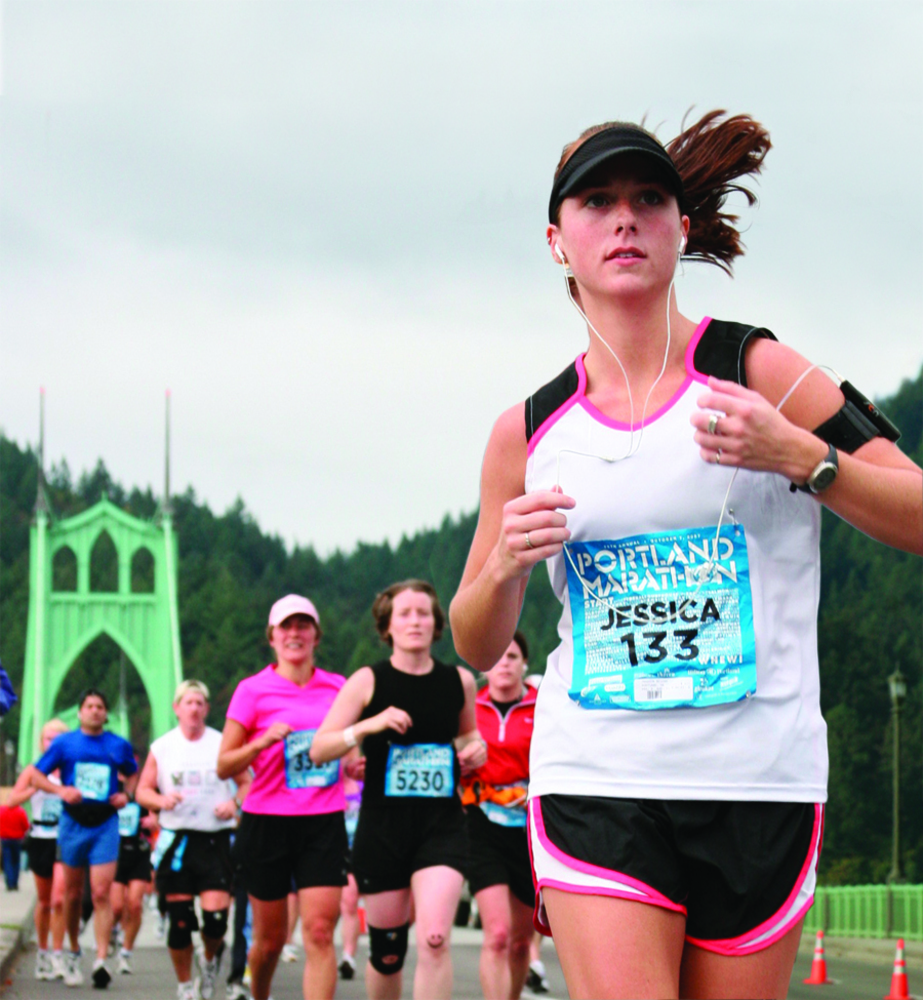The State of Oregon is celebrated for its running competitions, including the Portland Marathon and the Hood to Coast Relay, events that attract runners from around the world. Less known is ultra trail running—that is, races longer than twenty-six miles. Those who participate run distances ranging from 50 kilometers (about 31 miles) to 100 miles (about 161 kilometers), many of them on mountain trails and gravel roads. Among the successful ultra trail runners in Oregon is Andrew Miller, from Corvallis, who at age twenty was the youngest runner to win the Western States Endurance Run in California in 2016—the world’s oldest 100-mile trail race.
Ultra running in North America began with Indigenous people whose running cultures were well established before European contact. The twenty-first century practitioners of that tradition, northern Mexico’s Tarahumara Indians, are part of today’s ultra-running community. In Oregon, the Grants Pass Chamber of Commerce joined with the San Francisco Chamber to organize the Indian Redwood Marathon, an event held in 1927 and 1928.
Oregon runners have been taking to woodland and high desert trails for decades—in Portland’s Forest Park, on Mount Hood, Mary’s Peak west of Corvallis, on forest roads and trails in the Deschutes National Forest and in the Mount Ashland area, and on sections of Oregon’s 460-mile Pacific Crest Trail. The first ultra running races in the state were organized in the early 1980s, most of them on pavement. The early runs included the Coast Hills 100 in Siletz, beginning in 1983 and continuing for several years. The Oregon Road Runners Club began sponsoring ultra marathons in the early 1980s, including Megan’s Run, a twenty-four-hour fundraiser on the Lincoln High School track in Portland, and the Autumn Leaves 50/50 on bike paths and trails in Champoeg State Park.
With the growth of mountain biking, runners began using some of the bikers’ tortuous trail routes. With more runners taking to unpaved trails, ultra-runner Virginia Wolfe organized the fifty-mile McKenzie River Trail Run in 1988. Oregon’s oldest continuous ultra, the run was a fifty-miler until 1998, when race director Phil Vaughan changed the distance to 50 kilometers. The Oregon Road Runners Club began sponsoring the Mudderfell 6-Hour Run in Portland’s Forest Park in January 1982, a series that continued into the 1990s. Other trail ultras followed: Winterhawk Trail Runs, a fifty-miler and marathon in Forest Park (1990s); Corvallis McDonald Forest 50k Trail Run (1996); Hagg Lake Mud Run (1999); Siskiyou Out Back Trail Run (2000); Pacific Crest Trail 50k and 50-miler (2000); Jack Frost Five Hour Run (1999); and Where’s Waldo (2002), a 100k trail run staged at the Willamette Pass Resort. The first 100-mile trail run—held only once—was the Oregon PCT Ultra 100-Mile Endurance Run in 2009.
The increased number of ultra trail runs prompted a group of race directors to organize the Oregon Trail Series in 2000, which included five events: Jack Frost 5 Hour Run, McDonald Forest 50k, Siskiyou Out Back 50k, Pacific Crest 50/50, and McKenzie River 50k. They arranged a scoring system that gave overall and age-group awards to runners who recorded the highest finishes. Between 2005 and 2011, the roster included seven events; and in 2012, organizers added the Flagline 50k, near Mount Bachelor, and southern Oregon’s new Pine to Palm 100 mile Endurance Run. Because the number of Oregon ultra trail runs had become so numerous, race directors terminated the Oregon Trail Series in 2015.
The popularity of competitive ultra trail races caused many runs to reach capacity long before the events took place. Race directors faced permit limits on the number of runners, depending on the agencies involved, such as the U.S. Forest Service and Oregon Parks. This is especially true of the annual McKenzie River run, which fills within hours after online registration opens. Because the events take place over long distances and on difficult topography, directors customarily locate aid stations every five miles or so, depending on terrain and accessibility.
All of this testifies to the suitability of Oregon landscapes to long-distance trail running, from the state’s rushing streams (McKenzie), across alpine meadows (Siskiyou), to views of Broken Top and the South Sister through breaks in the pine forest (Flagline).
-
![]()
Runners on SW Terwilliger, c.1980.
Courtesy Oregon Hist. Soc. Research Lib., David Weintraub, 015843
Related Entries
-
Hood To Coast Relay
A nearly 200-mile foot race, the Nike Hood To Coast attracts runners fr…
-
![Indian Redwood Marathon (Redwood Empire Run)]()
Indian Redwood Marathon (Redwood Empire Run)
On June 14, 1927, eleven Native Americans stood in front of San Francis…
-
![Portland Marathon]()
Portland Marathon
In November 1972, the first Portland Marathon attracted 86 marathoners …
Map This on the Oregon History WayFinder
The Oregon History Wayfinder is an interactive map that identifies significant places, people, and events in Oregon history.




